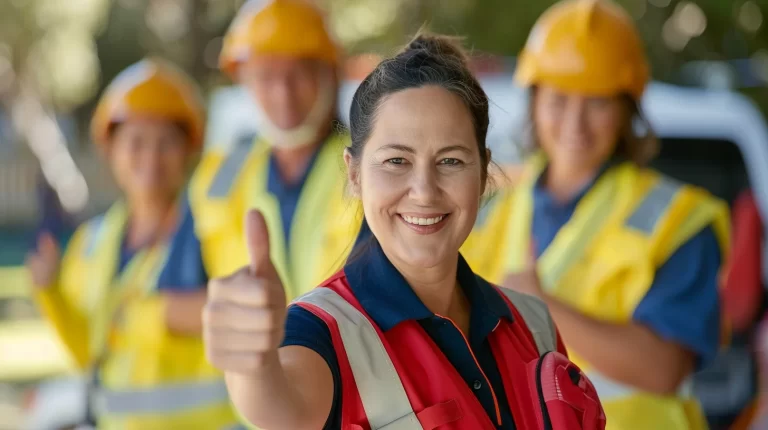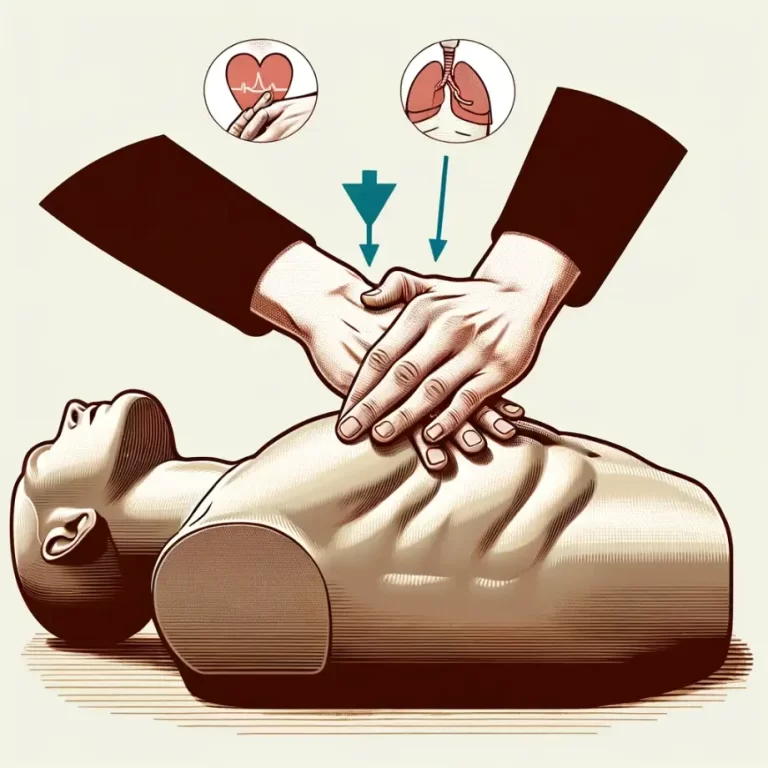Understanding Hyperthermia and Essential First Aid in Australia’s Heat



Australia’s vast landscapes, from its sun-baked deserts to its shimmering coastlines, are notorious for their scorching temperatures. Whether it’s the intense heatwaves of Perth, the dry summer days of Adelaide, or the tropical warmth of Cairns, the Australian climate is as beautiful as it is challenging. In these conditions, hyperthermia, where the body overheats, can pose a significant risk.

We’ve all been there – that moment under the blazing sun when we feel the weight of the heat but choose to ‘tough it out’. Maybe it’s during a weekend cricket match, a day at the beach, or even just a backyard barbecue. While the Aussie spirit often drives us to push through, it’s essential to recognize when our body is signaling distress.

It’s not just about understanding hyperthermia for ourselves; it’s about those moments when we spot someone else struggling and wondering if we should step in. This guide is a comprehensive dive into hyperthermia, its causes, and the critical first aid steps to ensure safety for ourselves and those around us in the face of Australia’s fierce heat.
What is Hyperthermia?
Hyperthermia is when the body’s temperature rises to dangerous levels. Think of the human body as a finely tuned machine that operates best within a specific temperature range. When we get too hot, our body has built-in mechanisms to cool us down. The primary way we do this is through sweating.
Sweat is our body’s natural cooling system. When we sweat, we release moisture onto our skin. As this moisture evaporates, it takes some of our body heat with it, helping to lower our temperature. It’s a bit like how we feel cooler when we step out of the water on a breezy day.

However, in extremely hot conditions, especially in places like Australia where the sun can be unrelenting, our sweating might not be enough to cool us down effectively. Or we might become so dehydrated we aren’t able to effectively sweat. If our body continues to heat up and can’t cool down quickly enough, we risk damaging vital organs and systems. This state of excessive and harmful body heat is what we refer to as hyperthermia.
Being aware of the signs and understanding the risks are essential, especially when spending time outdoors or engaging in physical activities during Australia’s hotter months.
Causes of Hyperthermia

The human body constantly interacts with its environment, taking in heat from its surroundings and producing its own heat from within. Most of the time, our natural cooling systems can balance this out. However, several factors can tip the scales and lead to hyperthermia.
1. Heat Absorption:
- Environmental Factors: Australia, with its hot summers and occasional heatwaves, can expose individuals to prolonged periods of direct sunlight and high temperatures. This can make it challenging for the body to stay cool, especially in areas with high humidity or in unventilated buildings where the heat gets trapped.
2. Heat Production:
- Physical Activity: Engaging in strenuous activities, especially during peak heat hours, can cause the body to produce more heat than it can effectively dissipate. This includes exercises, sports, or even heavy manual labor.
- Clothing: Wearing too much clothing, or clothing that doesn’t breathe well, can trap heat close to the body.
- Other Internal Factors: Conditions like obesity can also lead to increased heat production in the body.
3. Other Causes:
- Dehydration: Not consuming enough fluids makes it harder for the body to produce sweat, our natural cooling mechanism. Without enough sweat, we can’t cool down efficiently.
- Drugs and Medications: Some substances can interfere with the body’s ability to regulate its temperature.
- Infections: Certain infections can make the body more susceptible to heat.
- Failure of the Body’s Cooling Mechanisms: Sometimes, due to various reasons, the body’s natural temperature-regulating systems might not function as effectively as they should.
In the face of these challenges, especially in the unique climate conditions of Australia, it’s crucial to be proactive and take measures to prevent hyperthermia.
Prevention: Safeguarding Against Hyperthermia
In the sweltering heat of Australia, the age-old adage “prevention is better than cure” rings especially true. Here are practical steps individuals can take to minimize the risk of hyperthermia:
1. For Workers:
- Outdoor Professionals: If your job requires you to be outdoors, ensure you’re adequately prepared for the day’s conditions. Use shade where possible and take regular breaks to cool down.
- Radiant Heat & Hydration: Those exposed to direct heat sources or working in conditions that prevent effective cooling should be extra vigilant. Drink water regularly, and always have hydration close at hand.
- Workplace Guidelines: Always adhere to health and safety guidelines provided at your place of work. These are designed with your well-being in mind.
2. For Children & the Elderly:

- Vehicle Safety: Never leave children, the elderly, or anyone vulnerable unattended in parked cars. Even with windows down, temperatures can soar rapidly inside a stationary vehicle.
- Dress Smart: On particularly warm or humid days, ensure that they wear light-coloured, loose-fitting clothing. This allows for better ventilation and cooling.
- Stay Hydrated: Provide ample fluids regularly, ensuring they don’t become dehydrated.
3. For Athletes & Event Participants:
- Acclimatisation: If you’re participating in a sporting event, especially one that requires intense exertion, allow at least six weeks for your body to acclimatise. Start with milder exercises and build up to more strenuous activities.
- Timing is Key: Schedule activities during the cooler parts of the day—early morning or late evening. If possible, consider participating during cooler months.
- Stay Hydrated: Ensure regular access to water or sports drinks, especially during extended activities.
- Listen to Your Body: If you’re feeling unwell or have an existing fever or infection, consider postponing vigorous activities.
By following these preventive measures, one can significantly reduce the chances of experiencing heat-induced illnesses in Australia’s challenging climate conditions.
Recognizing Hyperthermia: Symptoms Across Different Stages
Hyperthermia doesn’t just present itself in one way; it has a range of symptoms that can be categorized into different stages, from mild dehydration to severe heat-induced illness. Recognizing these stages is vital for timely and effective intervention.
Mild Stage: Dehydration Symptoms
- Thirst or dry mouth, indicating a lack of fluids.
- Hot, dry skin which might appear red or flushed; alternatively, it may be tinged blue.
- Reduced or dark-coloured urine, a telltale sign of dehydration.
- Mood changes and slower response times.
- Fatigue, weakness, or headaches.
- For infants, a depressed fontanelle (the soft spot on a baby’s head).
Understanding Dehydration:
At this initial stage, the body is signalling a need for water. The symptoms are often subtle and can be easily overlooked, especially during activities. It’s vital to replenish lost fluids at this stage to prevent progression to more severe stages.

Moderate Stage: Heat Illness Symptoms
- Intensified fatigue and headaches.
- Feelings of nausea, potentially leading to vomiting.
- Dizziness or even collapse.
Delving into Heat Illness:
As hyperthermia advances, the body struggles to regulate its temperature, leading to more pronounced and uncomfortable symptoms. It’s essential to recognize this stage early and take steps to cool down to prevent the onset of severe symptoms.
Severe Stage: Heat Induced Illness Symptoms
- Difficulty or inability to continue with an activity.
- Rapid breathing or shortness of breath.
- Elevated body temperature beyond typical fever levels.
- Muscle weakness or lack of coordination.
- Dry skin or, paradoxically, excessive sweating.
- Confusion, hallucinations, or a decreasing level of consciousness.
- In extreme cases, seizures or a total loss of consciousness.
Navigating Severe Hyperthermia:
This stage is critical and potentially life-threatening. The body is signaling a severe inability to cope with the heat. Immediate intervention is needed. An alarming sign is the lack of sweating, especially when one should be sweating due to the heat. This indicates a dire state of hyperthermia.
Responding to Hyperthermia: Action Plans for Different Stages
When faced with a case of hyperthermia, it’s vital to act swiftly and effectively. Depending on the severity of the symptoms, the response can differ. Here are action plans tailored for each stage:
Mild Stage: Dehydration Action Plan
- Lie Down: Find a cool place, preferably in the shade, and loosen or remove excessive clothing.
- Cool & Hydrate: Use a fan, mist, or any available means to cool down. Provide a cool drink, ensuring the affected person is hydrated.
- Monitor: Observe for worsening symptoms and ensure that they don’t escalate.
Understanding this stage: At this point, timely intervention can quickly reverse symptoms, ensuring they don’t advance to more severe stages.
Moderate Stage: Heat Illness Action Plan
- Lie Down: Similar to the earlier stage, ensure the person is in a comfortable position in a cool place.
- Cool: Use every available means—fans, mists, shade—to bring down the body temperature.
- Call for Help: In the case of children and the elderly, it might be essential to call 000 (emergency services) even at this stage.
- Stay Vigilant: Continue to monitor their state, ensuring there’s no progression to a severe stage.
Delving into this stage: Symptoms are more pronounced now, but with quick intervention, there’s a good chance of recovery without severe consequences.
Severe Stage: Heat Induced Illness Action Plan
- Immediate Assessment: If the individual is unconscious and not breathing normally, commence CPR and follow the steps of the DRSABCD action plan.
- Immediate Cooling: Ensure the person lies in the shade. Start the cooling process by loosening or removing clothing.
- Call 000 – Ambulance: It’s crucial to get professional medical assistance as this situation is potentially life-threatening.
- Immersive Cooling: For individuals over 5 years, immerse in cold water for up to 15 minutes. For those under 5, use lukewarm water.
- Alternative Cooling Methods: If immersive cooling isn’t an option, moisten the skin, use fans continuously, and apply ice packs to areas like the groin, armpits, and cheeks.
- Hydration & Monitoring: If they are conscious and can swallow, offer cool drinks. Continuously monitor their state and handover to advanced care when they arrive.
Navigating this stage: This is an acute phase where every action can be decisive. Quick first aid responses, combined with adherence to the DRSABCD action plan and professional medical intervention, can be life-saving.
Alright, let’s move forward to the next section which is about prevention.
First Aid? Get prepared.
When it comes to hyperthermia, knowledge and timely action can mean the difference between a minor heat illness and a life-threatening condition. Being equipped with the right first aid skills is paramount, especially in a sun-kissed country like Australia.
Why Every Aussie Should Consider a First Aid Course:
- We Live in a Hotspot: From Snakes to spiders, from drownings to heatwave, it’s always great to know how to save a life.
- Confidence in Emergencies: Equip yourself with the knowledge to act swiftly and confidently. Instead of feeling helpless in critical situations, you can be the one to take charge.
- Community Responsibility: Think of the last time you witnessed someone in distress. Wishing you could help more effectively? First aid training provides that capability.
DRSABCD Action Plan – A Lifesaver in Critical Times If someone’s unconscious and not breathing, knowing CPR and the steps of the DRSABCD action plan can be a game-changer. We highly recommend diving into our “Ultimate Guide to the DRSABCD Action Plan” for a comprehensive understanding.

In Conclusion: While this article sheds light on hyperthermia and its first aid, there’s no substitute for professional training. At Accidental Health & Safety, we encourage everyone to invest in a first aid course. Equip yourself, protect your loved ones and be a responsible community member,
Hey there! I’ve been a first aider since 2012, eventually becoming a first aid trainer and writer. When I’m not writing first aid articles you can find me birding and listening to jangle pop.





